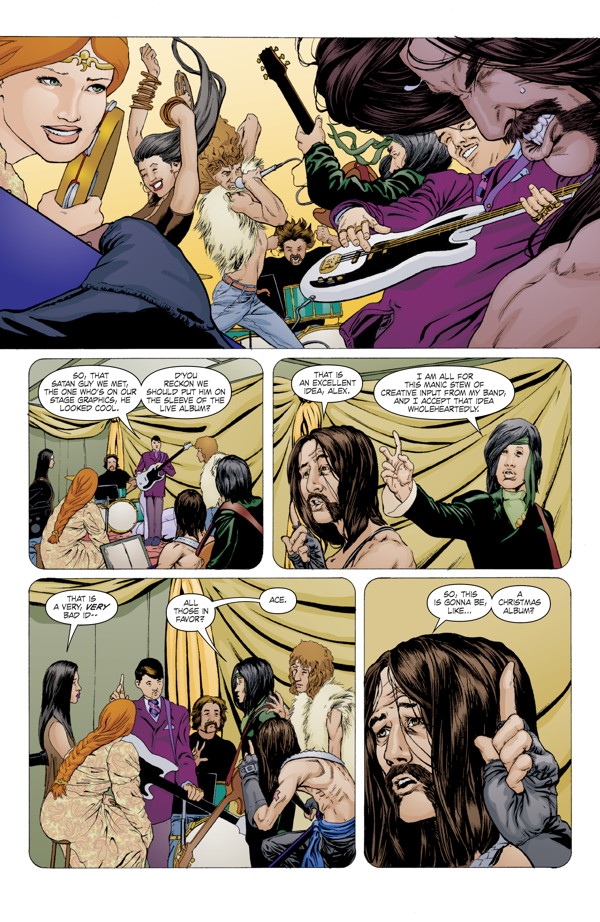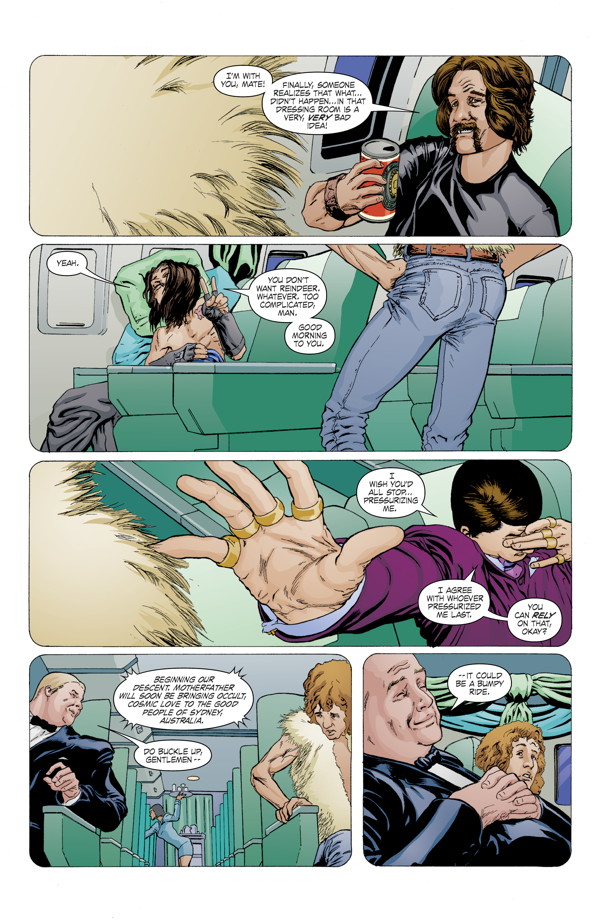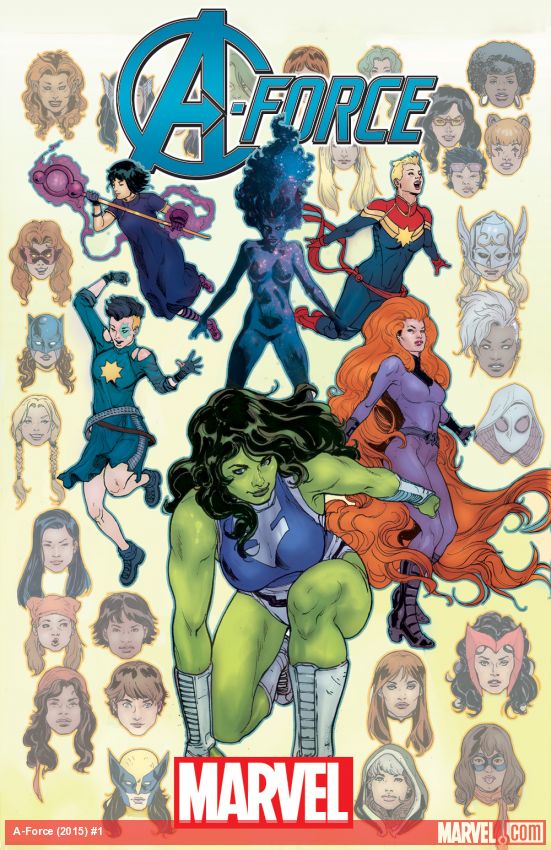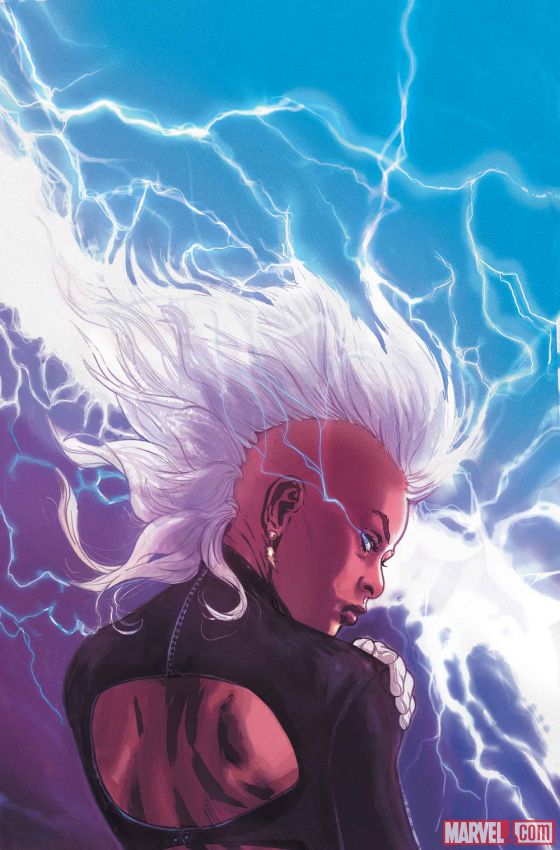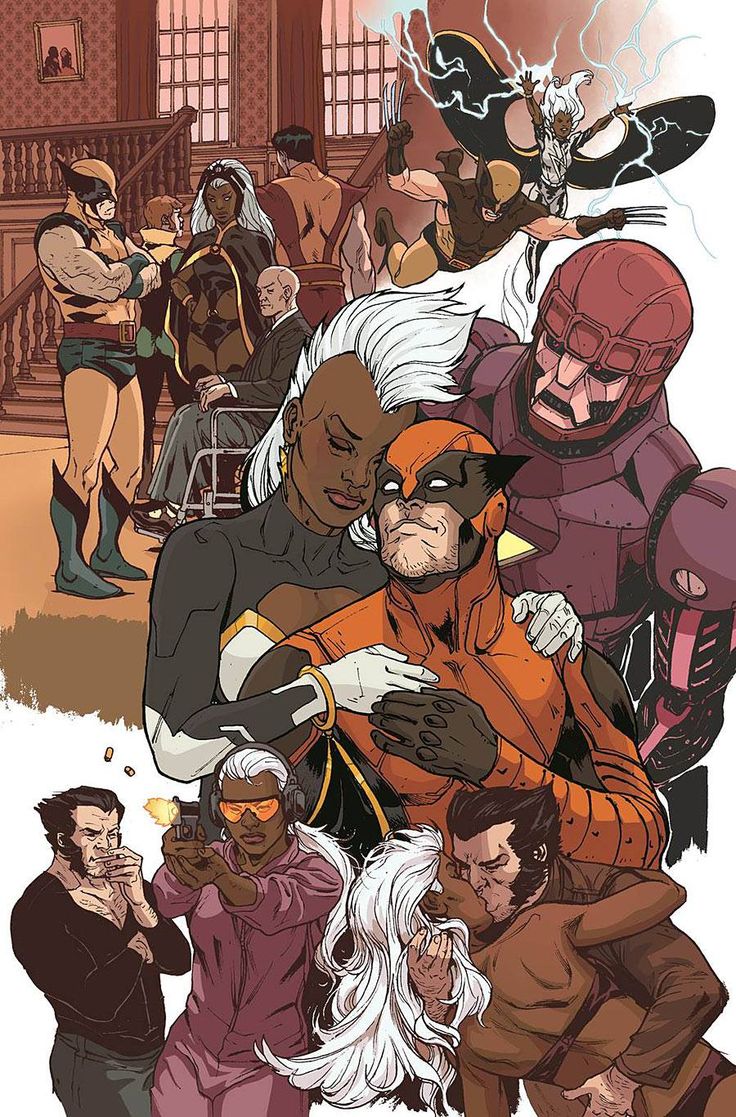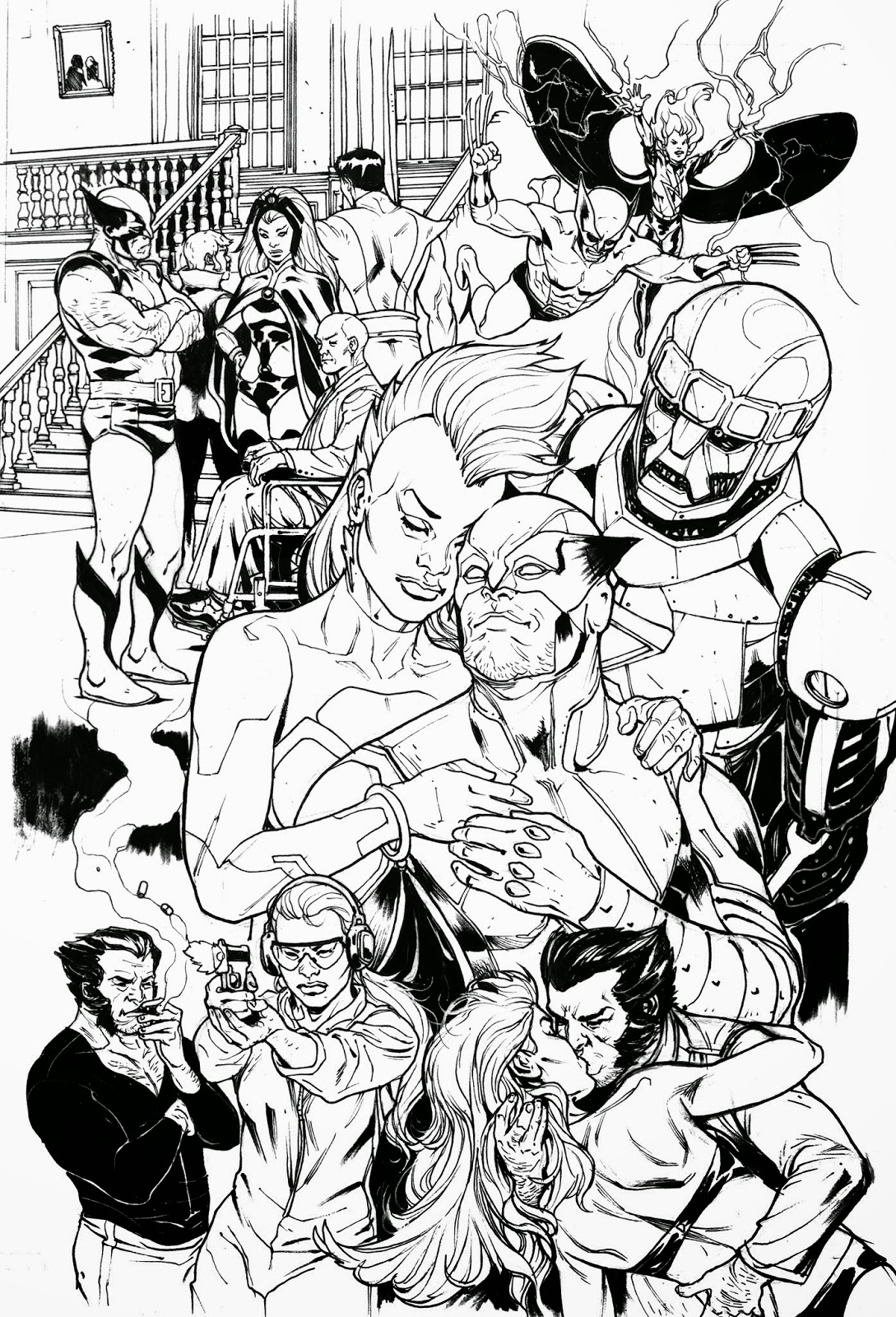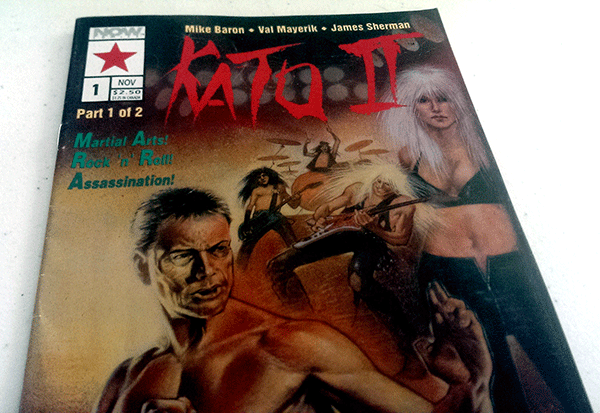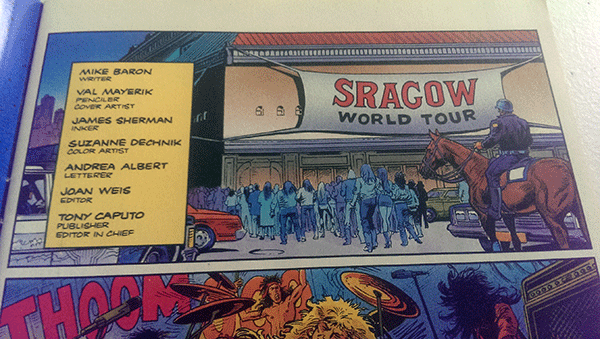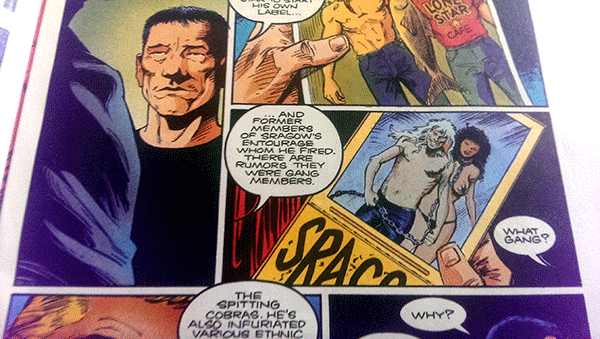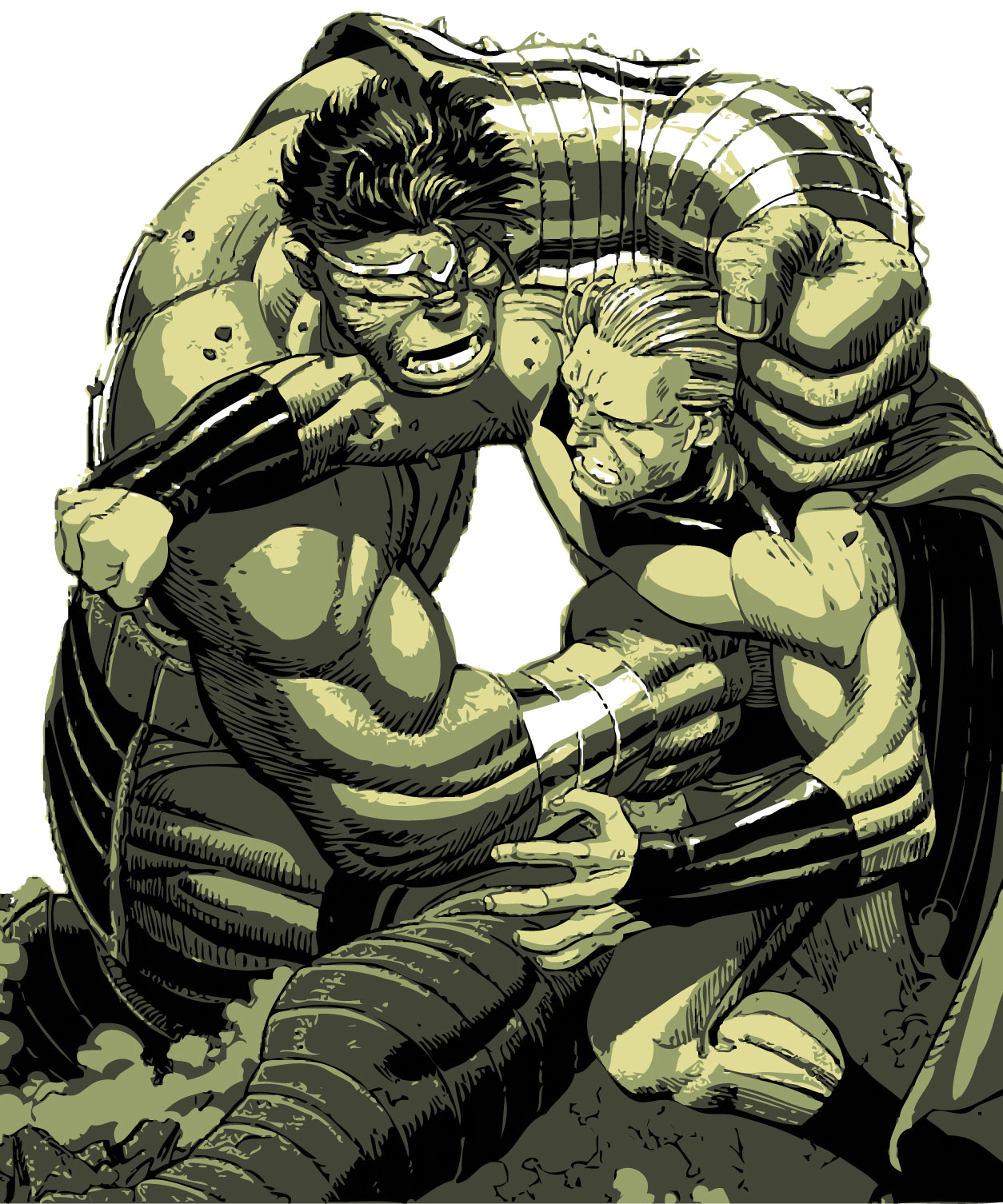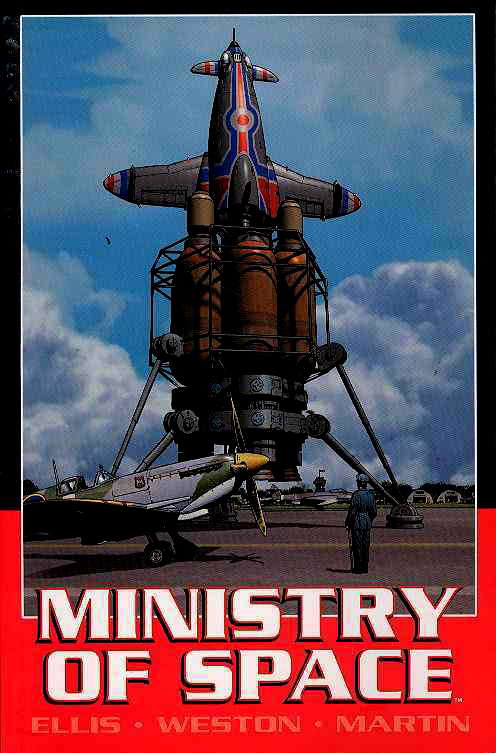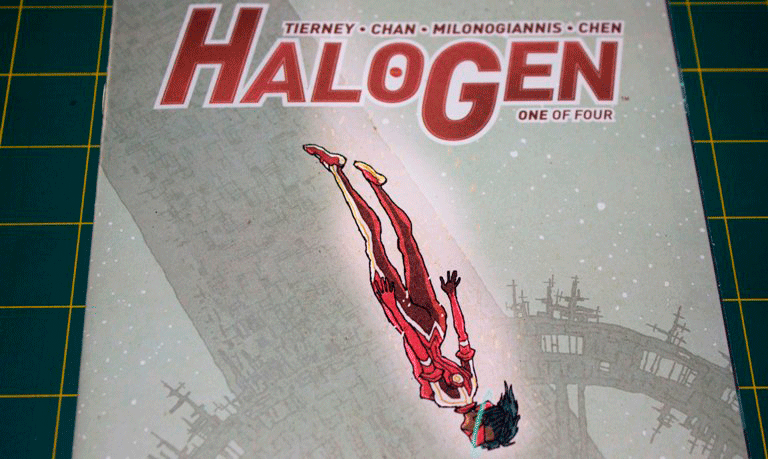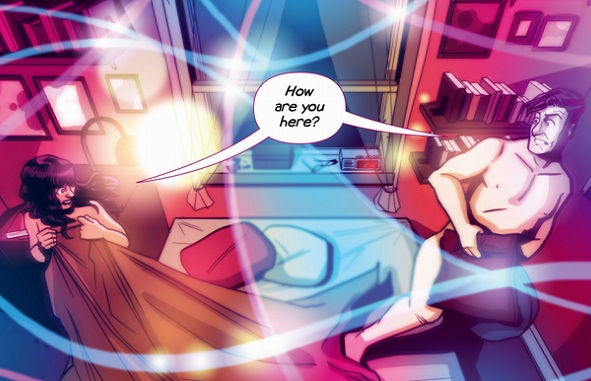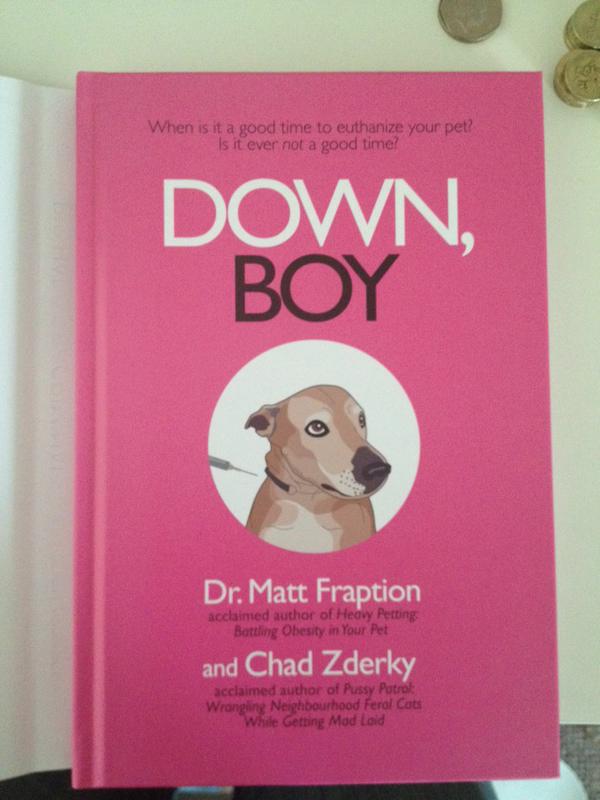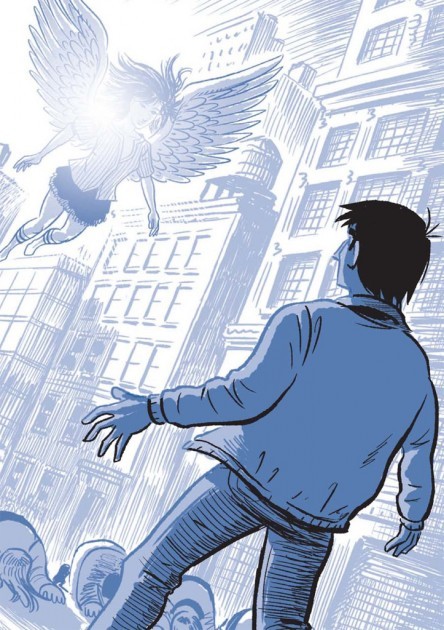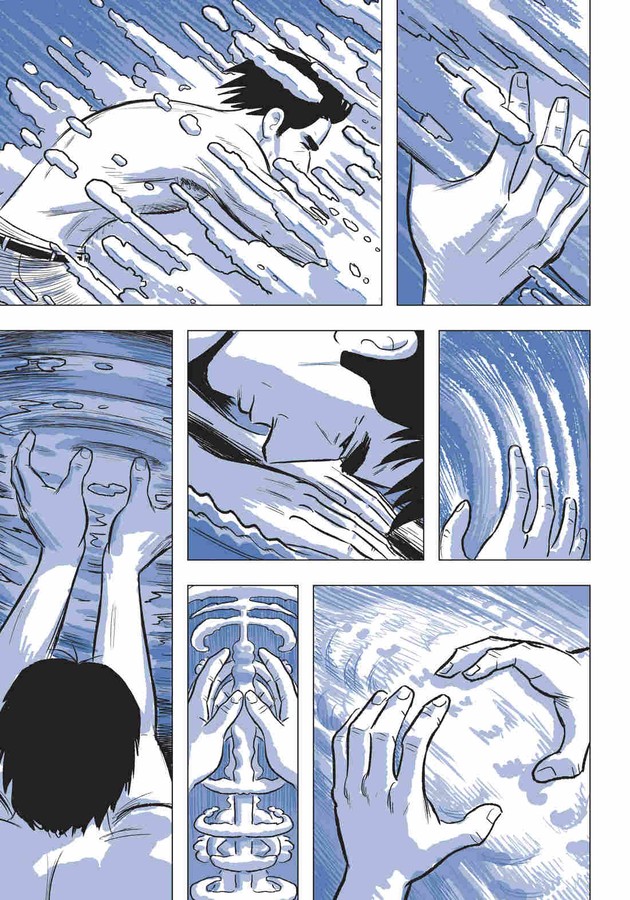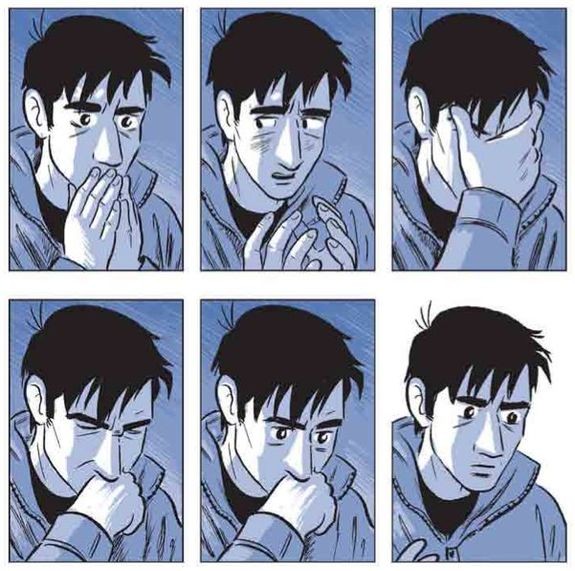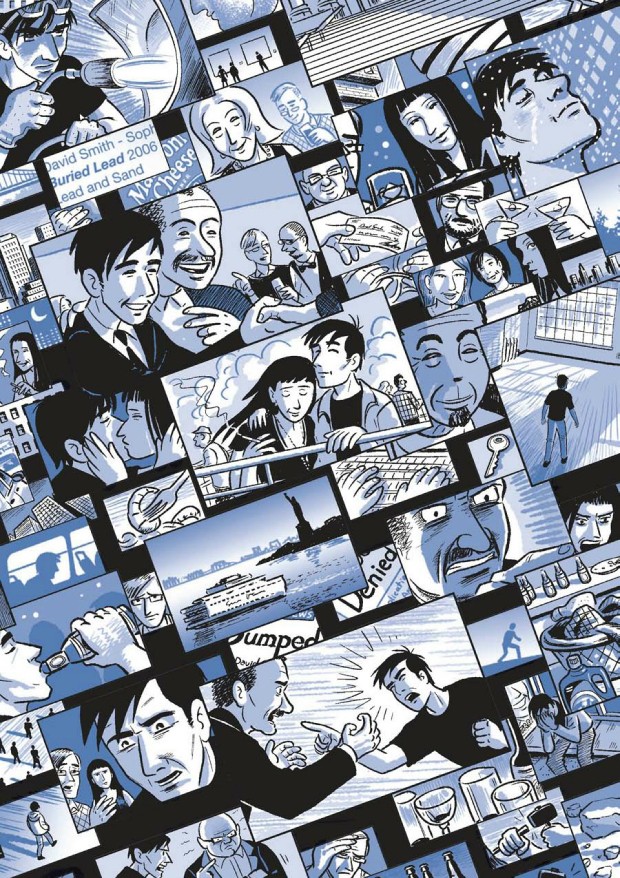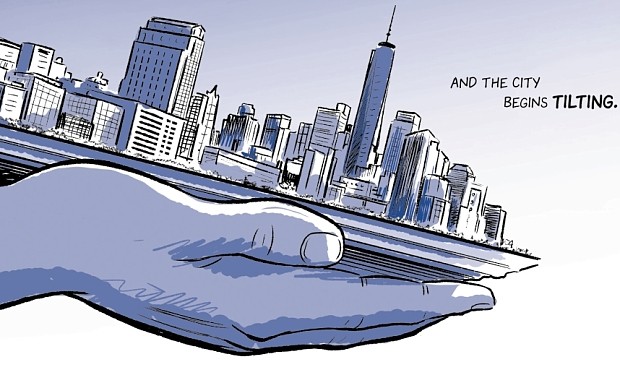“The Paybacks” #1—9 out of 10—Dark Horse; Written by Donny Cates (“The Ghost Fleet”) & Eliot Rahal (“Dark Horse Presents”); Drawn by Geoff Shaw (“Buzzkill”); Coloring by Lauren Affe (“Five Ghosts”); Lettering by Michael Heisler (“Barb Wire”); In stores 9/16/15
In “The Paybacks,” there’s a character named Bloodpouch. He’s described as “the funny one,” but his real defining characteristic is the amount of pouches he wears. Any place he can fit them on his body, he does—belts, bandoliers, headgear, even his eye patch is a pouch. He’s the kind of character that Rob Liefeld thinks about before going to sleep at night.
He’s joined by others, like Driver who “drives the van,” the comic reads. “Angry.” Or Jacob Destruction, the useless bubble boy whose skin explodes into napalm when exposed to air. And Miss Adventure, the deadly one who doesn’t seem phased when her call for back-up is met with a smoke break rather than support.
That’s the level Donny Cates and Eliot Rahal’s series is operating on. A lot of the ground they cover in this first issue may feel like familiar territory, but it’s done pointedly and to hilarious effect. They’re wagging a finger at the clichés and tropes that have overrun comic books and they’re hitting the right nerves with hysterical accuracy.
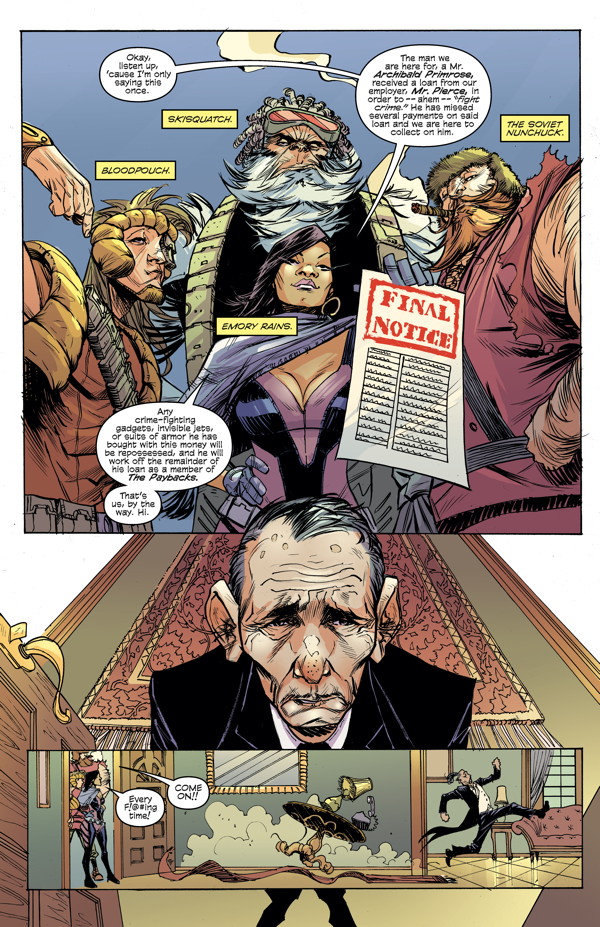
The Paybacks live in a world where crime fighters are in no short supply and often take out extravagant loans to afford it; loans afforded by the mysterious Mr. Pierce. It seems, so far, that Mr. Pierce isn’t the most forgiving of creditors.
See, when a superhero misses a loan payment, the Paybacks come a-knocking to repossess the hero’s belongings—invisible planes, molecular-dust-separators, dinosaurs, whatever. If the heroes used the loan money to purchase it while tricking out their Fortresses of Solitude, Mr. Pierce takes it back with force when a payment is missed. Whatever debt might be left over is worked off through service as one of the Paybacks.
Issue #1 follows the duel stories of Alpha Team and Beta Team, each tasked with repossessing the belongings of superheroes living beyond their means. Alpha Team is going after the Batman-esque Night Knight, who is the absolute highlight of the issue, while Beta Team looks for the heavy-hitter called Battery.
What ensues is a tightly woven narrative that pulls no punches when approaching the problematic and often lame clichés that plague comic books today. Night Knight is introduced to us as he pens his gritty text-box monologues while sitting on a rooftop overlooking the city (nay, his city). His only company is Night Mare, his armored unicorn sidekick, and everything about that was not only brilliant, but had me actually laughing out loud.
It pulls no punches when approaching the problematic and often lame clichés that plague comic books today.
I won’t go into detail on too many of the jokes, because I don’t want to ruin the experience of reading them first hand, but just know that Cates and Rahal nail every punch line. And that’s no easy task when writing a comic. The pacing is perfect and everything comes with a nudge and a wink as they clearly have fun writing the tongue-in-cheek humor that makes this book function so well.
It’s not just the scripting though. Geoff Shaw’s art is fantastic. The characters are visually distinct and they look alive on the page. They’re fluid and emotive, making the panels seem like they’re actually lived in and occupied. His action sequences—of which there are quite a few—are clear, even in the chaos. It was a joy pouring over the panels looking for the little in-jokes to the comic world and seeing little hints dropped about what we may see in the future. The level of detail in this book is amazing.
We can’t talk about the art without singing the praises of Lauren Affe’s coloring, though. The colors are perfect, breathing vibrancy into the characters and backgrounds. Again, it’s a world that feels occupied and Affe’s work pulls the panels together to make them pop off the page and feel almost tangible.
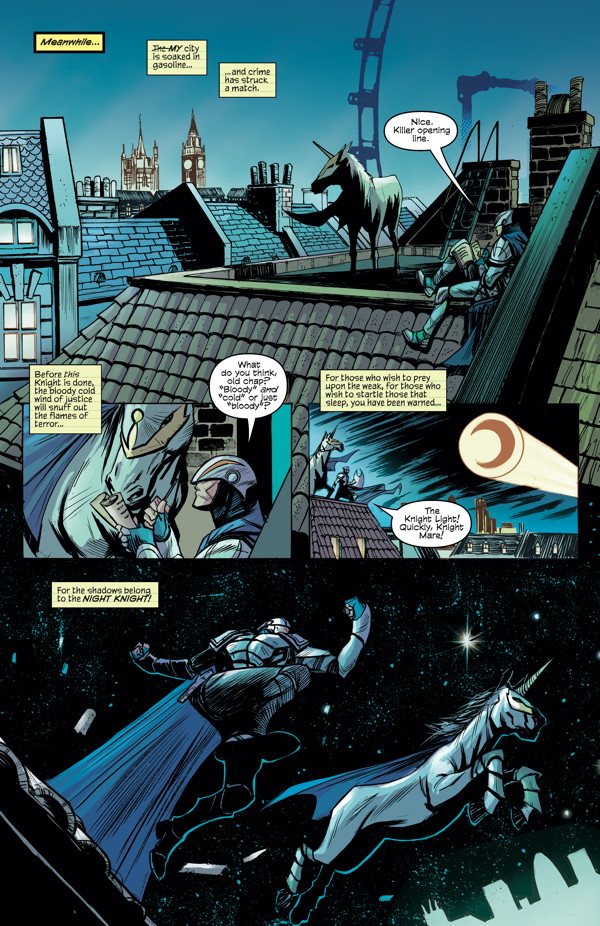
It’s the subtlety of “The Paybacks” that works so well. There are moments that seem genuinely bizarre, and they’re some of the best for pointing out the cracks in the comic book world. They also prove to be some of the funniest moments in the book. It’s what isn’t said, sometimes, that makes for the most powerful writing and funniest moments in “The Paybacks.” I’m thinking of a moment between Night Knight and Night Mare that could have been ruined if anything else had been said, but Cates and Rahal nail it by saying just enough.
This issue is largely meant to lay the groundwork, and that’s OK. The exposition never meanders nor overstays its welcome. The world is introduced with so much humor and style that readers will hardly notice the gentle explanations of how the world of the Paybacks works.
I was excited to read this book ever since I heard the premise. It sounds good on paper and absolutely delivers. From the very first page, which features a roster of the characters, I was laughing and by the end of the book I knew I’d be following this series through to the end.
9/10
